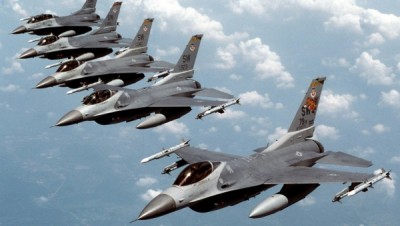US Bombers to Australia: Washington’s Deployments in the Pacific

The language never reflects the actual conduct. Deploying weapons to a region in greater numbers is not seen as provocative, even if placing such items in a theatre of operations is bound to get neighbours nervous. This is particularly the case about the US “rebalance” in the Asia-Pacific. “The ongoing deliberations,” notes John J. Hamre of the Centre for Strategic and International Studies, “are shaped more by the legacy of the past (for example arguing about where to relocate particular facilities) than by the security imperatives of the next thirty years.”
In the background, China lurks as both threat and opportunity – as long as the appropriate moves are made on its part to accommodate the wishes of Washington and its allies. Grow and flourish, by all means but do so within neatly demarcated parameters of power interests. Enemies can be refashioned and rebranded overnight, even if they do tend to hold the credit strings.
This is the backdrop of the remarks made last week by David Shear, the US Defence Department’s Assistant Secretary for Asian and Pacific Security Affairs. Before the US Senate Foreign Relations Committee on Wednesday, Shear explained that Washington would “be placing additional air force assets in Australia as well, including B-1 bombers and surveillance aircraft.”[1] This was in addition to the further deployment of military and marine units in the Western Pacific. Were these the bugles of war sounding?
“We will have a very strong presence, very strong continued posture throughout the region to back our commitments to our allies, to protect and work with our partners and to continue ensuring peace and stability in the region, as well as back our diplomacy vis-à-vis China on the South China Sea.”
A few trembles could be felt at this announcement in Canberra, despite the continuing fantasy on the part of officials down under that the US presence in the region somehow acts as one of stability. “I see the greater presence of the US in our part of the world as a force of stability,” insisted Prime Minister Tony Abbott. “Australia’s alliance with the US is a force for stability.” Naturally, the alliance wasn’t “aimed at anyone” in particular.
This is a point reiterated by the policy wonks and members of the Obama administration while insisting that US power is fundamental. As Vice President Joe Biden observed in August 2011 to members of the 3rd Marine Regiment at Marine Corps Base Hawaii, “We are a resident Pacific power and we intend to stay that way. We are not going away.”[2]
While the Abbott government, like other Australian ones before it, happily endorse a form of bottom feeding lackey status, the presence of strategic bombers may have been a step too far, at least for now. The reality remains that any country silly enough to host powerful, strategic powers is bound to be inviting itself as a target, not of stability, but concerted instability.
The US-Australian defence agreement countenances the presence of American troops to operate in the Northern Territory on a rotational basis. This is a form of semantics in action – the Australian defence minister, Kevin Andrews, refuses to accept that the marines have bases in Australia. They are merely “based” for six-month periods. A spokesman for the minister even went so far as to claim that the agreement “does not allow US bases to be established in Australia.” False autonomy and sovereignty is thereby maintained.
As far as the bombers were concerned, the Prime Minister made inquiries. “I’ve sought some information about the testimony provided in Washington by an official. I understand that the official misspoke and that the US does not have any plans to base those aircraft in Australia.” A spokeswoman for the US embassy in Canberra followed up by saying that there were “no plans to rotate B-1 bombers or surveillance aircraft in Australia.”
This form of parrying and dismissal forms the staple of diplomatic deception. It is very unlikely that Shear misspoke at all, expressing, in a moment of utmost clarity, US ambitions and goals in the Asia-Pacific area. After all, the expansion of US interests was already being considered in July by General Herbert Carlisle, chief of the US Airforce in the Pacific. In time, the US would send “fighters, tankers, and at some point in the future maybe bombers, on a rotational basis” to Australia.
What goes on in Washington tends to provide a better barometric reading as to what happens in Canberra – notably when it comes to the deployment of US marines and other military assets. The Australian view on the subject is nigh irrelevant.
The only issue, then, is what consequences issue forth from such statements and consequent actions. The 2012 CSIS report on the subject of how the Pentagon’s posture in the Asia-Pacific region should be directed found confusion and discontinuity, a patchwork of inconsistencies. “DoD needs to explain the purposes of force posture adjustments in the light of the new security challenges in the Asia Pacific region.”[3]
There may be nothing so vile as a manufactured consensus when it comes to policy, but the pundits and planners continue to do so in those capitals worried about the shift of power taking place in Asia. The latest, if seemingly inconsistent round of promised military deployments are ominous, but those in Beijing will have anticipated them. A response is bound to come in due course.
Dr. Binoy Kampmark was a Commonwealth Scholar at Selwyn College, Cambridge. He lectures at RMIT University, Melbourne. Email: bkampmark@gmail.com
No comments:
Post a Comment